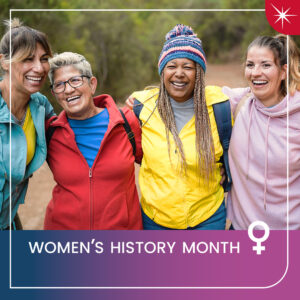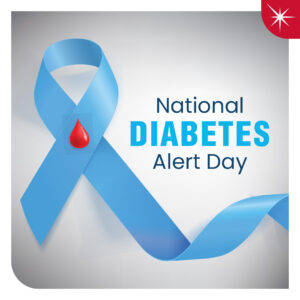What does LGBTQ+ mean?
These letters stand for lesbian, gay, bisexual, transgender, questioning, queer, intersex, pansexual, two-spirit (2S), androgynous, and asexual (LGBTQQIP2SAA).
- Lesbian: A woman who is emotionally and physically attracted to other women.
- Gay: A person who feels attracted to people of the same sex or gender as themselves.
- Bisexual: A person who is attracted to women/females and men/males.
- Transgender: A person whose gender identity does not correspond to that traditionally associated with the anatomical sex the person had at birth. For example, a person assigned female gender at birth identifies as a male.
- Questioning: A person who is unsure about or exploring their sexual orientation or gender identity.
- Queer: A person who thinks of their sexual orientation or gender identity outside societal norms. Some people view queer as more fluid and inclusive than traditional categories for sexual orientation and gender identity.
- Intersex: A person born with a group of congenital conditions in which the reproductive organs, genitals, or other sexual anatomy do not develop according to traditional expectations for females or males.
- Pansexual: A person who is emotionally and physically attracted to people of all gender identities or whose attractions are unrelated to gender.
- Two-Spirit: A person who embodies both a masculine and a feminine spirit.
- Androgynous: A person with combined characteristics of both male and female.
- Asexual: A person who experiences little or no sexual attraction to others. Asexual people may still engage in sexual activity.
The LGBTQ+ community has been advocating for its rights for many years. Here is a timeline of the most significant milestones advancing LGBTQ+ rights:
1969 — Stonewall riots in New York gain national attention for LGBTQ+ rights.
1970 — The first Lesbian and Gay Pride March take place in New York City.
1970 — Marsha P. Johnson and Sylvia Rivera were transgender activists seen as pioneers for LGBTQ+ rights.
1973 — The American Psychiatric Association removes “homosexuality” as a mental disorder.
1975 — Minneapolis becomes the first city to protect transgender people from discrimination.
1982 — Wisconsin is the first state to outlaw discrimination based on sexual orientation.
1996 — Supreme Court says protections for gays/lesbians are civil rights guaranteed to all U.S. citizens.
2000 — Vermont becomes the first state to recognize civil unions.
2000 — President Bill Clinton names June Gay and Lesbian Pride Month.
2004 — Massachusetts legalizes same-sex marriage.
2005 — Civil unions become legal in Connecticut.
2006 — Civil unions become legal in New Jersey.
2008 — Connecticut legalizes same-sex marriage.
2009 — President Obama renames June as LGBT Pride Month.
2009 — Iowa and Vermont legalize same-sex marriage.
2010 — The District of Columbia and New Hampshire legalized same-sex marriage.
2010 — President Obama signs a law to end the “Don’t ask, don’t tell” policy. Under this policy, the military cannot ask about a service member’s sexual orientation.
2011 — New York legalizes same-sex marriage.
2012 — Maryland and Washington state legalize same-sex marriage.
2015 — The Supreme Court rules same-sex marriage is legal across the U.S.
2021 — Dr. Rachel Levine, assistant secretary for health, becomes the first openly transgender person confirmed by the Senate to a federal post.
How we can become an ally and promote equality
An “ally” is a person who is not LGBTQ+ but uses their privilege to support LGBTQ+ people and promote equality. The LGBTQ+ community and Pride month have a rich history. Here are some things we can do to become an ally in your life and workplace:
|
|
Personal life |
Workplace |
How Quartz supports the LGBTQ+ Community |
| 1 | Report and speak out against anti-LGBTQ+ harassment and discrimination. | Advocate for adopting and enforcing a nondiscrimination policy at work. | Quartz doesn’t discriminate based on race, ethnicity, color, national origin, sex, gender, sexual orientation, age, disability, or religion. |
|
2 | Learn, read, and discuss LGBTQ+ issues. | Create a culture that welcomes and promotes diverse thinking. | Quartz provides educational opportunities for its employees such as Trans & Gender issues, LGBTQ+ Resources, Allyship, and Navigating Transgender Healthcare Services. |
|
3 | Create safe spaces for LGBTQ+ to exist. | Create a company culture that welcomes diversity. | Quartz has an employee-led LGBTQ+ Employee Resource Group (ERG). The ERG provides opportunities to network, participate in DE&I initiatives, pursue professional and personal development, and improve cultural understanding. |
|
4 | Educate yourself about the adversity members of the LGBTQ+ community experience daily. | Promote diverse thinking. | Quartz provides many pieces of training to learn about cultural differences. For example, Quartz’s Why Diversity Matters Training shares why we embrace diversity at Quartz. |
|
5 | Support everyone regardless of their sexuality or identity as LGBTQ+. | Eliminate bias from hiring/promoting processes. | Quartz raises awareness about implicit bias with hiring managers and provides strategies for making objective hiring decisions. |
|
6 | Use inclusive language when talking to other people. | Use inclusive language in all company communications. | At Quartz, employees learn to use and acknowledge gender pronouns respectfully when communicating with co-workers and members. |
We can become better allies by supporting, understanding, and empowering the LGBTQ+ community. Because in the end, showing PRIDE is about working together toward a more inclusive society.
Local Resources:
7riverslgbtq.org
QuartzBenefits.com/dei




